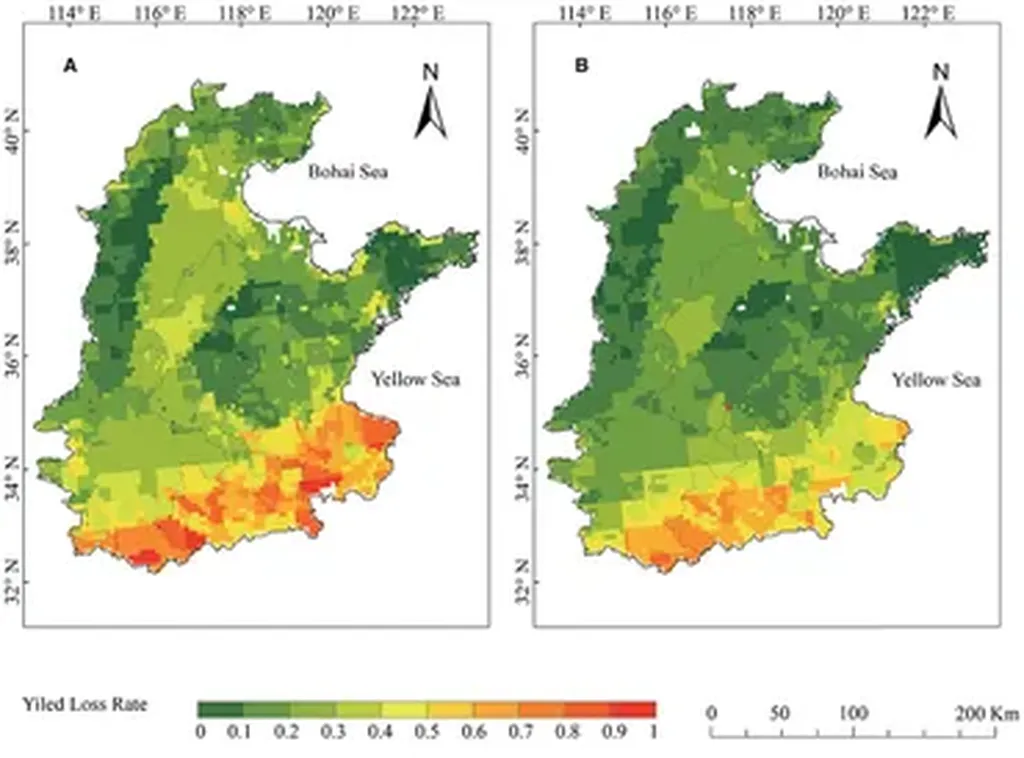In the heart of China’s Loess Plateau, a region known for its undulating landscapes and fertile soils, a groundbreaking study is shedding new light on how smallholder farmers can boost their winter wheat yields. The research, published in the journal ‘Plants’, employs a novel approach called boundary line analysis (BLA) to pinpoint key soil constraints that have long stifled productivity in this vital agricultural region.
The study, led by Jing-Jing Han from the Key Laboratory of Sustainable Dryland Agriculture of Shanxi Province at Shanxi Agricultural University, delves into the intricate relationships between soil nutrients and winter wheat yields. By analyzing data from 95 smallholder farms, the researchers have uncovered critical insights that could reshape nutrient management strategies and, ultimately, enhance food security.
“Our findings reveal that maintaining soil organic matter and available phosphorus within specific optimal ranges is fundamental for maximizing yield,” Han explains. This is a significant departure from traditional, one-size-fits-all approaches to fertilization, offering a more nuanced and effective strategy for smallholder farmers.
The research highlights the considerable variability in soil nutrients across the Loess Plateau. For instance, soil available phosphorus showed the highest coefficient of variation (67.1%), underscoring the need for tailored, site-specific interventions. The boundary line models developed by the team identified significant parabolic relationships, defining optimal ranges for key soil nutrients. These ranges—18.5–21.7 g kg⁻¹ for soil organic matter, 10.4–49.0 mg kg⁻¹ for alkali-hydrolyzed nitrogen, 40.5–61.6 mg kg⁻¹ for available phosphorus, and 218.3–284.1 mg kg⁻¹ for available potassium—provide a scientific basis for targeted nutrient management.
The commercial implications of this research are substantial. By enabling farmers to optimize nutrient application based on precise soil conditions, the study paves the way for increased yields and improved economic returns. This is particularly crucial in regions like the Loess Plateau, where smallholder farmers often operate on narrow margins and face significant challenges in achieving optimal productivity.
Moreover, the BLA approach offers a novel methodological advantage for heterogeneous agricultural landscapes. Its ability to delineate optimum nutrient ranges amidst inherent field variability makes it a powerful tool for diagnosing and addressing soil constraints. This could revolutionize agricultural extension services and fertilization policies, ensuring they are better aligned with the unique needs of smallholder farmers.
Looking ahead, the research by Han and her team could shape future developments in precision agriculture. By providing a robust framework for site-specific nutrient management, it sets the stage for more sustainable and productive farming practices. As the global population continues to grow, the need for innovative solutions to enhance food production becomes ever more pressing. This study offers a promising step in that direction, with the potential to transform the lives of smallholder farmers and contribute to global food security.
In a world where agricultural productivity is increasingly challenged by climate change and resource constraints, the insights from this research are both timely and impactful. By bridging the gap between scientific understanding and practical application, it offers a beacon of hope for a more sustainable and food-secure future.

